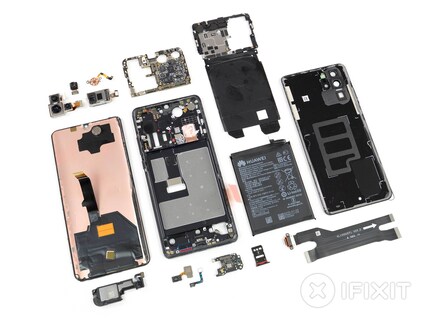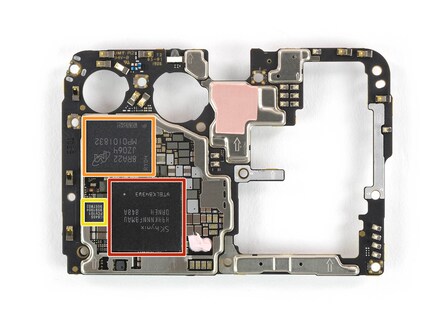
News + Trends
Huawei vs. the US: a 90 day deferral period, Huawei CEO speaks
by Dominik Bärlocher
Huawei is facing supply stops from key partners in the trade war between China and the USA. The chip manufacturer ARM in particular could bring Huawei down if the partnership is lost.
In the latest round of the trade war between the USA and China, US companies have been banned from supplying hardware and software to Chinese manufacturer Huawei. Google has now been given a 90-day deadline that allows the search giant to continue doing business with Huawei until 19 August 2019. Other hardware and software manufacturers, on the other hand, are left behind.
In the mobile field, Huawei is very well positioned for the current situation, even if the situation remains precarious. The reason for this is the Kirin system-on-a-chip (SoC), which is developed by Huawei's subsidiary HiSilicon and is used exclusively in Huawei devices. The current version is the Kirin 980
.
Your smartphone runs on a system-on-a-chip (SoC). This is not just a chip, but can be compared to the mainboard of a computer. Chips with functionality are attached to a circuit board, which together determine the performance and capabilities of your smartphone.

On the hardware side, SoCs are usually L-shaped and nestle around the battery, which takes up most of the space in your smartphone. The Kirin platform, on the other hand, is rectangular and mounted on top of the battery. The battery is still the largest physical component of your phone.
All of these elements are enabled and controlled by separate chips on a circuit board. This is where it becomes difficult for Huawei and HiSilicon because parts of this technology are bought in. The reason why Huawei has positioned itself well with the Kirin platform is that there is a lot of Huawei's own development in your mobile phone compared to the competition. However, a look at the individual chips shows that Huawei is facing major problems if the trade ban continues.
An important note at this point: The Kirin platform and the ARM Cortex serve as an illustration here. Huawei's Matebooks have the same problem, network hardware too, smartwatches too. In short: No matter what Huawei produces, it contains parts that are bought in.
The CPUs on HiSilicon's Kirin 980 represent the brain of the smartphone with eight cores. The system performance ranges from a maximum of 2.6GHz on the ARM Cortex-A76 to a maximum of 1.92GHz on the ARM Cortex-A55. This performance is generally utilised according to the efficient maxim "as much performance as necessary, as little as possible".
The ARM Cortex CPUs are centrally managed by ARM Ltd. ARM has its headquarters in Cambridge, England. However, the Cortex chips are not exempt from the trade ban. According to chip lexicon WikiChip, the Cortex A76, codenamed Enyo, was developed in Austin, Texas. Is this now considered a US product?
Huawei could be saved here by one of ARM's headquarters in China. This is because ARM is interested in continuing to do business with Huawei, as Huawei is a major source of revenue.

The same situation also applies to the graphics chip on the Kirin platform. The Mali-G76 chip also comes from ARM. Except that the development started in a company called Falanx Microsystems from Trondheim, Norway.
But this national link only concerns the architecture of the chip, not the chip itself as a physical object. Huawei licences the architecture from ARM in England. But ARM is a subsidiary of a Japanese company called Softbank. The chips are manufactured by a Taiwanese company called TSMC. Whether Taiwan is an independent state or not is disputed by the Chinese government in particular.
If the ARM Cortex is now a US development and Taiwan belongs to China, Samsung could be a possible alternative. Samsung is one of the world's largest manufacturers of semiconductors and chips and is based in South Korea. If Huawei pushes the order for ARM Cortex from Taiwan to South Korea, the business relationship would, at least theoretically, be as follows:
Whether this chain can realistically materialise, who is allowed to produce what, when, under what circumstances, with whom and how, and other pertinent questions on this topic cannot be answered by laypeople. Because if the situation with the trade ban as it stands on 22 May 2019 continues, then lawyers will have to deal with it.
Except for ARM, Huawei no longer employs Huawei. This is reported by the British BBC, which states that ARM is to cease all business relations with Huawei with immediate effect. The reason for this is that the ARM CPUs contain "US technology".
But even before the lawyers can come up with any more or less creative workarounds to the trade bans and then legitimise them, delivery stops are taking place in reality. The US company Qorvo is said to be representative of a large number of suppliers. According to a short report from the news agency Reuters, the manufacturer of the Front End Module on the Kirin 980 SoC stopped deliveries to Huawei on Tuesday, 21 May 2019.
In a communiqué on its website, Qorvo has adjusted its forecast economic figures for the first quarter of 2019. This as a direct and explicit consequence of the sanctions against Huawei.
This update is in response to action taken by the Bureau of Industry and Security (BIS) of the United States Department of Commerce to add Huawei Technologies Co., Ltd. and 68 of its affiliates (
Translation:
This update is in response to the actions of the U.S. Chamber of Commerce's Bureau of Industry and Security (BIS), which has blacklisted Huawei Technologies Co, Ltd. and 68 of its sister companies (
According to a report in the business magazine Bloomberg, Huawei has prepared for supply disruptions and stockpiled chips for "at least three months" so that production of smartphones and other devices does not have to be interrupted. However, it is unknown exactly how long the stocks in Huawei's warehouses will last. The South China Morning Post speaks of one year's worth of stock. According to Bloomberg, citing anonymous sources, Huawei had already been warned by government contacts last December that the company could face supply stops. The advice: "Look for non-US alternatives".
These supply stops are having a wider impact, as it is not only US companies that have stopped supplying Huawei. The German manufacturer Infineon has stopped supplying chips manufactured in the USA, according to a report in the Japanese stock market magazine Nikkei. The reason: Infineon wants to clarify what the legal situation is before the company is guilty of any offence.
If Huawei were to permanently lose ARM as a partner, this could become an "insurmountable problem" according to analysts at BBC. Because without ARM, there will be no smartphones at this point in time.
Adding to this is the fact that the loss of ARM means the loss of a backup plan for building laptops. After the delivery stop of the undoubtedly American company Intel, Huawei lacks technology for processors in mobile computers, among other things. However, the Kirin platform is powerful enough - with a few modifications - to provide a laptop with decent performance. This is especially true as Huawei's announced own operating system is intended to close the gap between smartphones and computers.
Despite this, if Huawei is removed from the blacklist again, business can continue across national borders. So all is far from lost, especially as exemption licences to trade with Huawei are already being granted in the USA. The situation is still developing.
Journalist. Author. Hacker. A storyteller searching for boundaries, secrets and taboos – putting the world to paper. Not because I can but because I can’t not.
From the latest iPhone to the return of 80s fashion. The editorial team will help you make sense of it all.
Show all